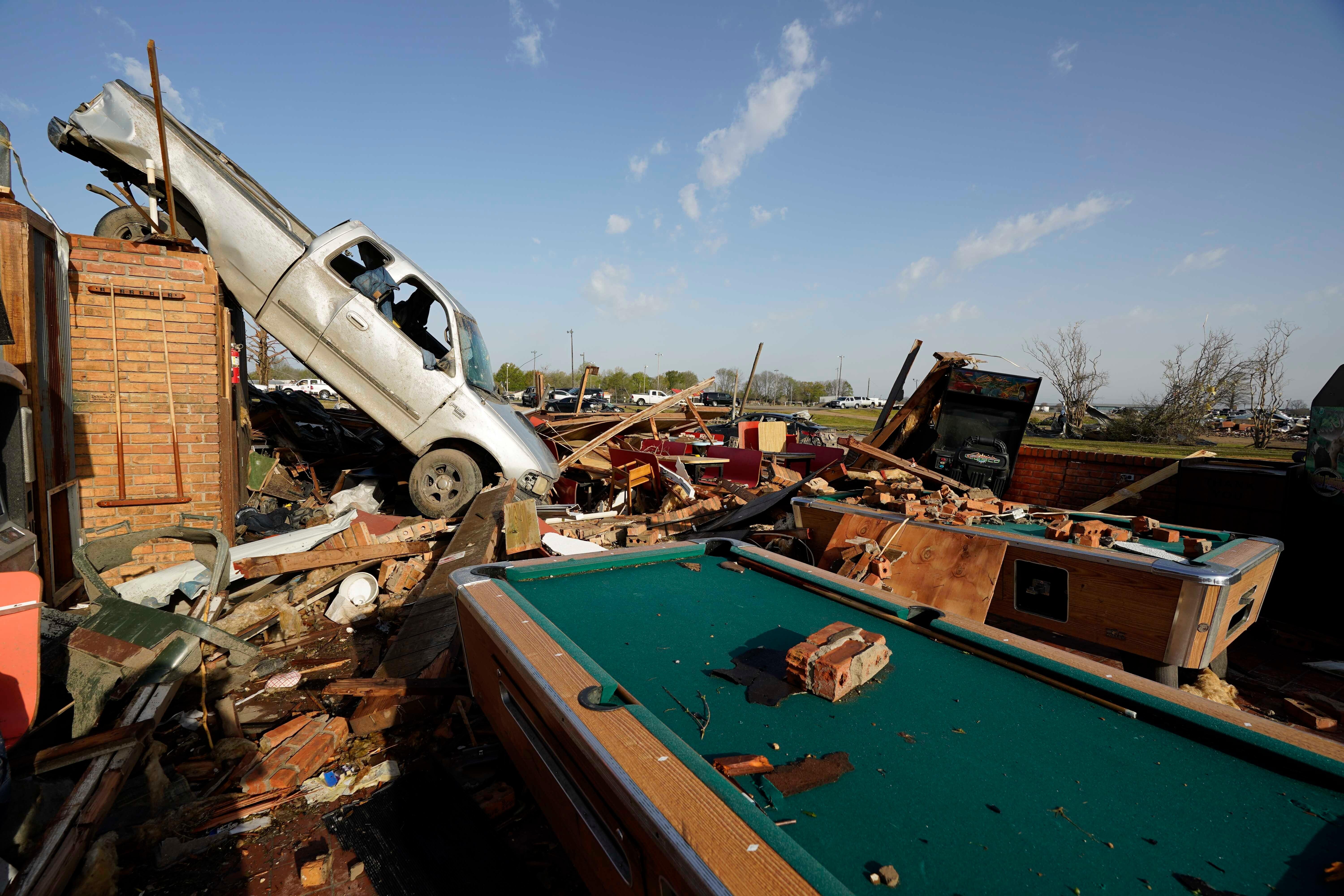ROLLING FORK, Miss. (AP) — Rescuers raced Saturday to search for survivors and help hundreds of people left homeless after a powerful tornado cut a devastating path through Mississippi, killing at least 25 people, injuring dozens, flattening entire blocks and obliterating houses in at least one Mississippi Delta town as it carved a path of destruction for more than an hour. One person was killed in Alabama.
The tornado devastated a swath of the town of Rolling Fork, reducing homes to piles of rubble, flipping cars on their sides and toppling the town's water tower. Residents hunkered down in bathtubs and hallways during Friday night's storm and later broke into a John Deere store that they converted into a triage center for the wounded.
The Mississippi Emergency Management Agency announced late Saturday afternoon in a tweet that the death toll had risen to 25 from 23. Four people previously reported missing have been found, but dozens also were injured.
“There’s nothing left,” said Wonder Bolden, holding her granddaughter, Journey, while standing outside the remnants of her mother’s now-leveled mobile home in Rolling Fork. “There’s just the breeze that’s running, going through -- just nothing.”
Other parts of the Deep South were digging out from damage caused by other suspected twisters. One man also died in Morgan County, Alabama, the sheriff's department there said in a tweet.
“There’s nothing left,” said Wonder Bolden, holding her granddaughter, Journey, while standing outside the remnants of her mother’s now-leveled mobile home in Rolling Fork. “There’s just the breeze that’s running, going through -- just nothing.”
Throughout Saturday, she and others walked around dazed and in shock as they broke through debris and fallen trees with chainsaws, searching for survivors. Power lines were pinned under decades-old oaks, their roots torn from the ground.
Mississippi Gov. Tate Reeves issued a State of Emergency and vowed to help rebuild as he headed to view the damage in an area speckled with wide expanses of cotton, corn and soybean fields and catfish farming ponds. President Joe Biden also promised federal help, describing the damage as “heartbreaking.”




